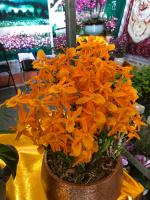Why were palm trees planted in LA?
Los Angeles, the City of Angels, is known for its palm trees. The towering trees line streets, decorate parks, and adorn buildings throughout the city. But why were palm trees planted in LA in the first place? Let's take a closer look.
The history of palm trees in LA
The presence of palm trees in Los Angeles dates back to the late 19th century. The trees were originally planted by horticulturists and botanists who were drawn to LA's ideal climate and believed that palm trees would thrive in the area.
One of the earliest and most successful proponents of palm trees in LA was Kate Sessions, a horticulturist who founded the San Diego Floral Association in 1907. Sessions is credited with introducing more than 300 varieties of trees and plants to Southern California, including many varieties of palm trees.
Over the years, palm trees became increasingly popular in LA, and were planted not just for their shade and beauty, but also for their ability to evoke a sense of tropical paradise. The Hollywood film industry also helped popularize the palm tree as a symbol of Southern California glamour and luxury.
The benefits of palm trees in LA
Palm trees provide a number of benefits to the city of Los Angeles. Here are a few of the most notable:
Palm trees thrive in warm climates and require minimal water, making them an ideal choice for LA's dry, desert-like climate.
They are also relatively low maintenance, requiring only occasional pruning and fertilization.
Palm trees are a visually striking addition to LA's urban landscape, helping to create the city's unique aesthetic.
They provide shade and shelter for people and animals alike.
Finally, palm trees can help to improve air quality by removing pollutants from the air through their leaves.
The future of palm trees in LA
While palm trees will likely always be an iconic feature of LA's landscape, they are not without their drawbacks. For one thing, many palm trees are non-native species, which can have negative ecological impacts on the environment. Additionally, palm trees are not particularly resilient to extreme weather events or disease outbreaks.
In recent years, there has been a growing movement in LA to diversify the city's tree canopy by planting more native species and reducing our reliance on non-native palms. This approach can help to increase the resilience of LA's urban forest and provide additional benefits to the city and its residents.
Conclusion
So, why were palm trees planted in LA? It was largely a matter of climate and aesthetics - palm trees thrive in warm, dry climates and help to create the city's unique visual identity. While they have many benefits, there are also some potential downsides to consider. By diversifying LA's tree canopy and planting more native species, we can create a more resilient and sustainable urban forest that benefits everyone who calls Los Angeles home.

 how many times do yo...
how many times do yo... how many planted tre...
how many planted tre... how many pine trees ...
how many pine trees ... how many pecan trees...
how many pecan trees... how many plants comp...
how many plants comp... how many plants can ...
how many plants can ... how many plants and ...
how many plants and ... how many pepper plan...
how many pepper plan...
































